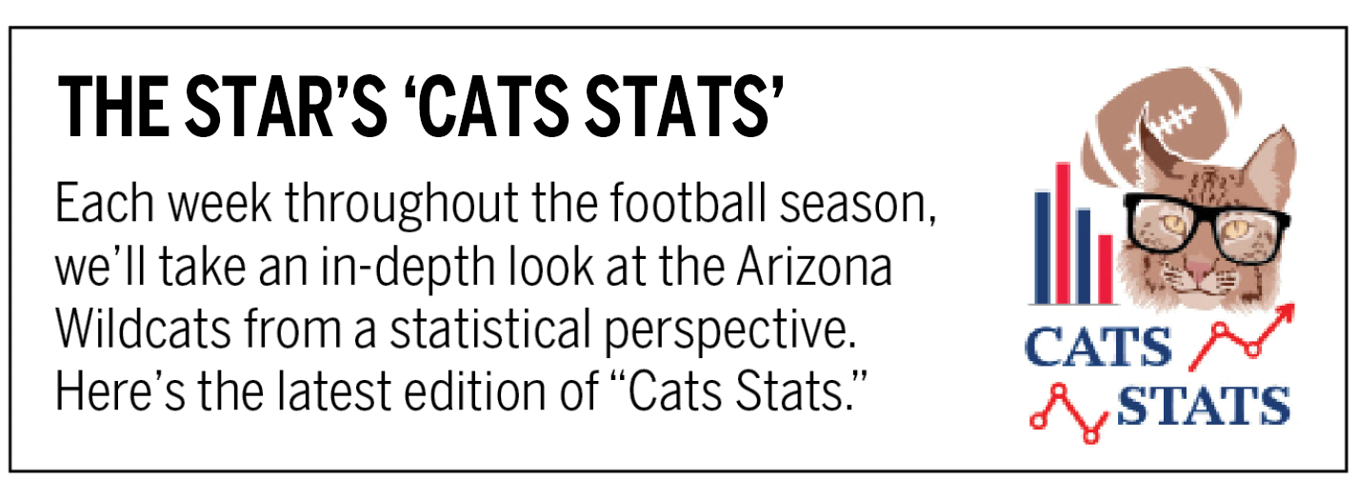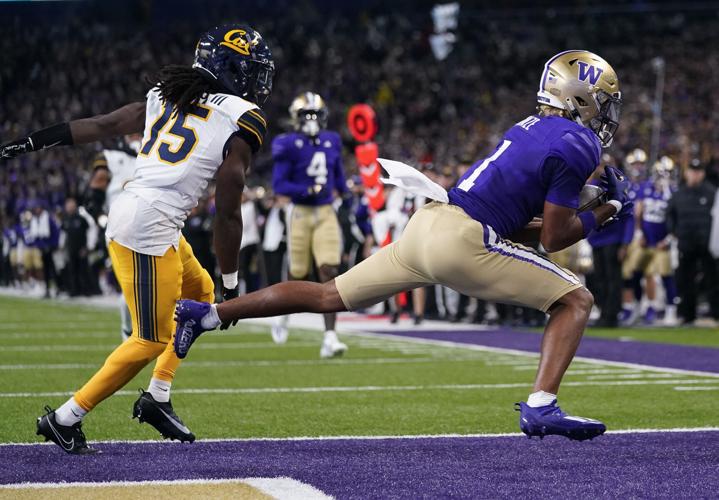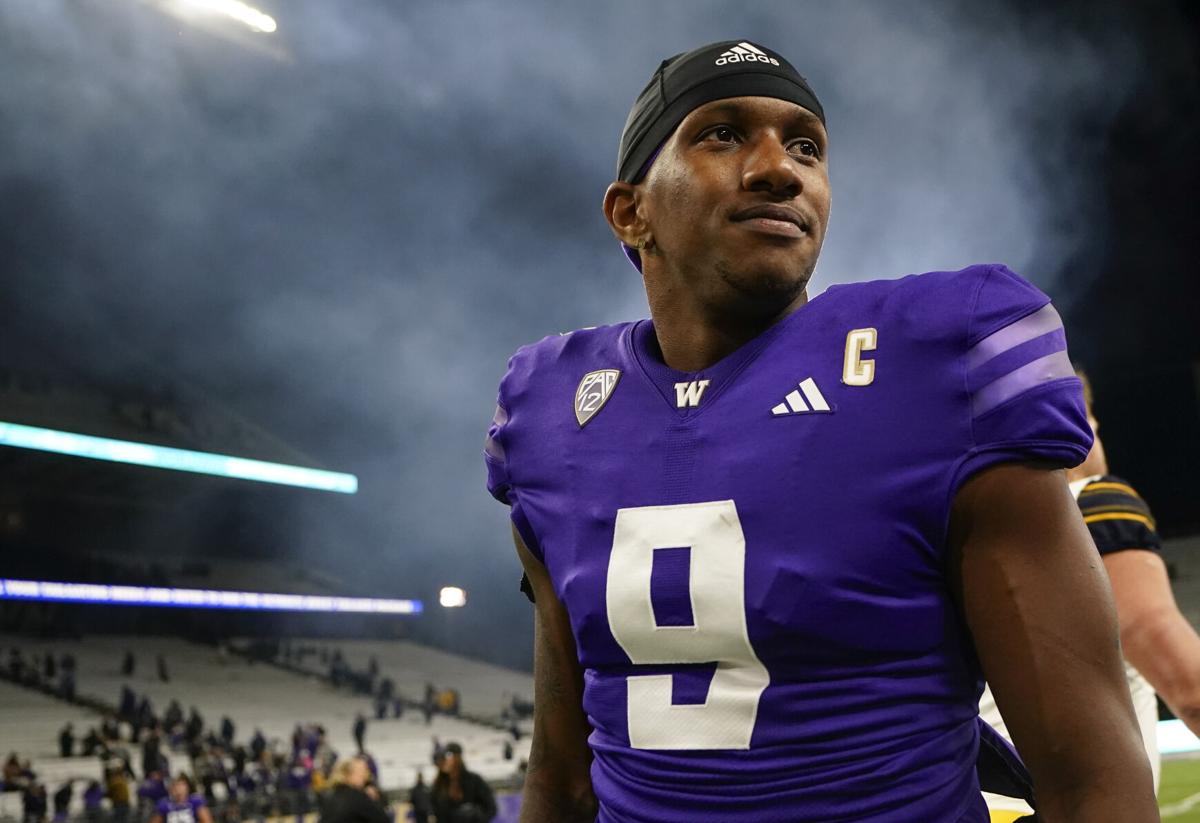You can’t help but be impressed with the performance of Arizona’s defense so far — especially in the statistical category that matters most: points allowed.
The Wildcats are surrendering 16 points per game, tied for 22nd best in the nation. They haven’t allowed fewer than 30 a game over a full season since 2014.
They also haven’t faced a team like No. 7 Washington, which comes to Tucson for a prime-time showdown Saturday night. The Huskies are unlike any other team in college football.
Washington is putting up video-game numbers — if the difficulty level was locked on “rookie.” Every UW game is a facsimile of Dolphins 70, Broncos 20 — and not just because Michael Penix Jr. and Tua Tagovailoa are both left-handed quarterbacks.
The Huskies are explosive and efficient — a rare and potent combination we’ll explore in this week’s “Cats Stats.”

Let’s start with some of the basic numbers. Washington leads the country in total yards (593.3) and passing yards per game (467.3). They rank third in points per game (49.8) — behind current Pac-12 and future Big Ten rivals USC and Oregon.
Penix leads the nation in passing yards (1,636) and passing touchdowns (16). He has nearly twice as many yards as Arizona has allowed (877) and four times as many TD passes (four).
But here’s where it gets truly confounding. No team has had more chunk plays than Washington — and no team has allowed fewer sacks.
The Huskies have the most scrimmage plays of 20-plus yards (39) and the most of 30-plus yards (23) in the country. They’re a mere third in plays of 10-plus yards (83; USC is No. 1 with 85).
Penix is No. 1 nationally in pass plays of 10-plus yards (62), 20-plus (32) and 30-plus (18). His top receiver, Rome Odunze, leads the country with 24 receptions of 10-plus yards and 13 of 20-plus.
Among qualifiers, Penix ranks fourth nationally in yards per pass attempt (11.86). As a team, Washington ranks second (12.2) behind only Air Force, which runs the option and has attempted only 12 passes in four games.

Washington wide receiver Rome Odunze, right, scores a touchdown against Cal defensive back Lu-Magia Hearns III during the first half of their game Saturday, Sept. 23, in Seattle.
Meanwhile, Penix has the 12th-highest average depth of target at 12.4 yards, per Pro Football Focus (minimum 49 dropbacks). Among the 46 qualifying quarterbacks with an ADOT of 10.7 yards or more, Penix has the highest completion rate at 74.6%. Only one other QB, Texas State’s T.J. Finley, is over 70%. Only three others are over 65%.
So not only do the Huskies take more shots than most down the field, Penix is deadly accurate at delivering those passes.
“That offense is putting up numbers,” UA defensive tackle Tyler Manoa said. “(It’s) definitely a group that’s gonna air the ball out, and that's something that we’re going to need to prepare for this week.
“Up front, working on pass-rush skills — that's going to be a main emphasis, to try to affect the quarterback in any way we can.”
Typically, it takes more time to throw farther downfield. That should give opposing defenses a better chance to sack Penix.
Yet he’s been sacked only one time in 143 dropbacks. Penix has been pressured 27 times, per PFF. His pressure-to-sack rate of 3.7% is the fourth lowest among qualifying QBs.
That isn’t a result of Penix eluding pressure and scrambling for big gains. He has scrambled only four times, according to PFF. He has thrown the ball away eight times. That might be the best any defense can do.
“They score a lot of points,” Arizona defensive coordinator Johnny Nansen said. “We’re just trying to do our job and make sure we don't give up explosive plays, which is most of their offense. You look at the touchdowns, man, they’re airing it out. So if we could do a good job staying on top of those routes, that will help us.”
The Wildcats do have one benefit heading into Saturday night: They faced the Huskies last season. In terms of their offensive system and personnel, not much has changed.
“They’re very similar to last year,” Nansen said. “They’ve been in the system for a long time — the quarterback that is, and the receivers.
“I know how explosive their offense is. We just gotta make sure we’re handling our assignments and communicate really well this week.”

It's difficult to get pressure on Washington quarterback Michael Penix Jr., right — and even harder to sack him. Penix has been sacked only once heading into the UW-Arizona matchup Saturday.
Arizona struggled as much against Washington last year as everyone else has since Kalen DeBoer and Penix arrived in Seattle. Penix completed 36 of 44 passes (81.8%) for a school-record 516 yards with four touchdowns and no interceptions in a 49-39 UW victory.
The Wildcats did not sack Penix. They pressured him seven times in 45 dropbacks, hitting him once, per PFF. And when they did pressure him, Penix thrived. He completed 7 of 7 passes for 121 yards.
Talk about a no-win scenario.
Cause for optimism can be found, though. Only two defensive players who started in last year’s game, linebacker Jacob Manu and defensive back Treydan Stukes, are still starters. None of the others are with the team.
Additionally, Arizona hadn’t debuted its “dollar” defensive package at that point. The alignment puts seven defensive backs on the field. Nansen broke it out for the USC game two weeks later. Washington hasn’t faced it yet, so it’s at least a wrinkle.
When it comes to limiting big plays, the UA defense has fared better than last season for the most part. The Wildcats have allowed an average of 12 plays of 10-plus yards, five of 20-plus and 1.5 of 30-plus through four games. Last year those figures were 16.8, 4.8 and 2.5.

Arizona defensive back Treydan Stukes, left, shown breaking up a pass intended for Washington wide receiver Ja'Lynn Polk during their Oct. 15, 2022, matchup in Seattle, is one of only two defensive starters from that game who are still Wildcats.
However, as mentioned at the top, the Wildcats haven’t faced anything like what they’re about to encounter. They visit USC and Caleb Williams after facing Washington. Then comes Washington State and Cameron Ward. And a bit down the road: Colorado and Shedeur Sanders.
Arizona’s four opponents so far consist of an FCS team (NAU), two schools struggling to find their offensive identities (Mississippi State, Stanford) and a Group of Five program that’s averaging 17.4 points per game (UTEP).
Washington has topped that number five times — in a quarter.
VIDEO: Arizona football defensive coordinator Johnny Nansen, speaking Sept. 27, 2023, on the Wildcats not having an interception so far in the 2023 season: “The ball is right there, catch it. … I told them, ‘I’m kinda tired of throwing the ball at you if you’re not gonna catch it in practice.'" (Justin Spears/Arizona Daily Star)









